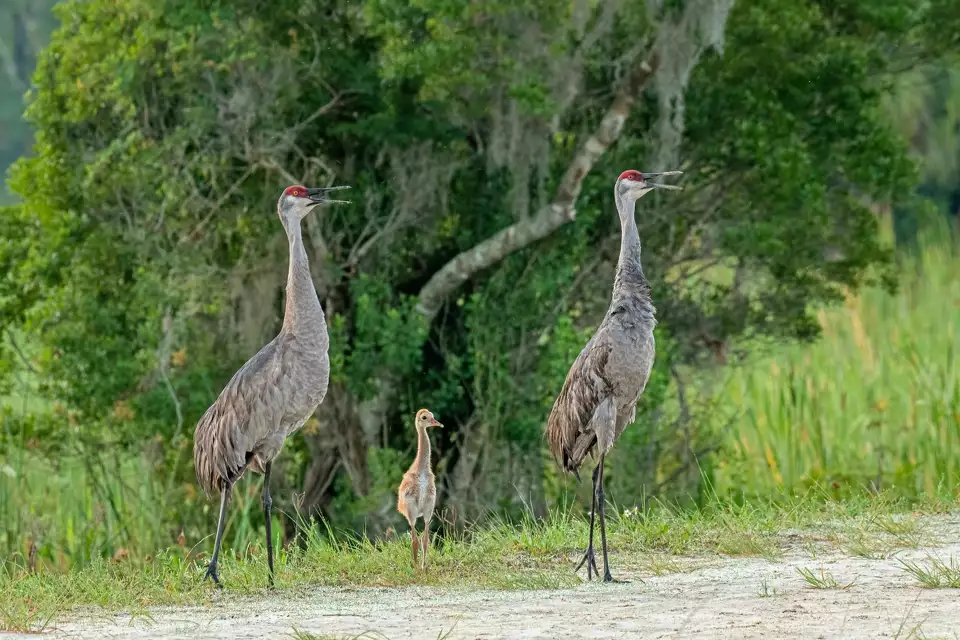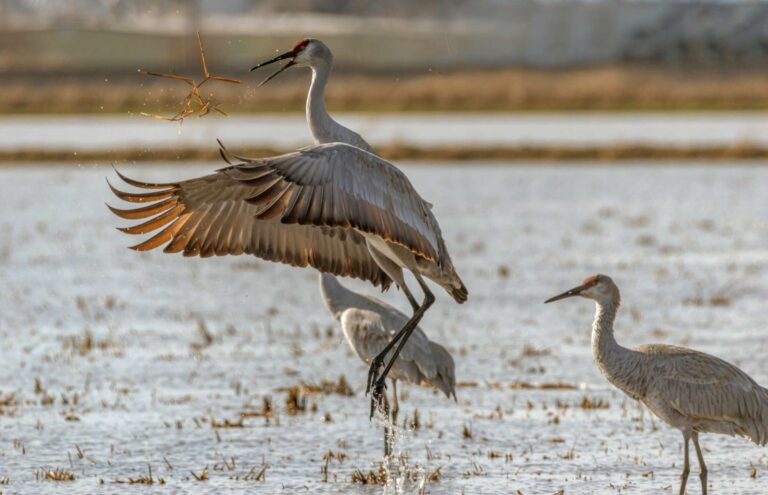Once nearly extirpated in California, sandhill cranes are coming back
For centuries, there was a familiar spring and summer element in the Sierra Nevada skies: hundreds of enormous white birds soaring over the lakes and mountains. On land, their courtship displays were notable from afar as they leaped, twirled and flapped their elegant black-tipped wings in complicated shows to find a lifelong mate. With a wingspan of around 7 feet and an average height of 5 feet, sandhill cranes were once easy to spot around Lake Tahoe, even from a distance.
Due to overhunting and habitat loss, there were only three or four breeding pairs throughout the entire state by 1944, despite once likely numbering in the hundreds of thousands. However, the state of California didn’t grant the birds “fully protected” status until 1970.
Due to overhunting and habitat loss, there were only three or four breeding pairs throughout the entire state by 1944
In the past few years, they’ve occasionally been seen around Truckee and areas north of Lake Tahoe toward Sierraville and Quincy. “But in the Tahoe Basin, it’s a slightly more recent of a recolonization,” says Will Richardson, executive director of the Tahoe Institute for Natural Science (TINS). “And they’re subject to a lot more pressures from folks, hikers, recreational use, and trail use.”

Now, more than five decades since their protection, the birds are coming back to the region — and environmentalists are hoping that 2024 will be the year even more pairs come back to breed in the Tahoe Basin. But while Tahoe’s weather created ideal marshland conditions for them last summer, it also brings with it a threat: more people spending more time in Tahoe’s wilderness areas.
“When they pick their nesting spots, that’s pretty early in the spring, and not peak recreation season yet in Tahoe,” Richardson says. “So they don’t have a sense of how busy some of these spots are going to get. So that sets them up at a bit of a disadvantage.”
Another factor limiting their growth, as Richardson emphasizes, is the extended […]
Full article: www.sfgate.com

